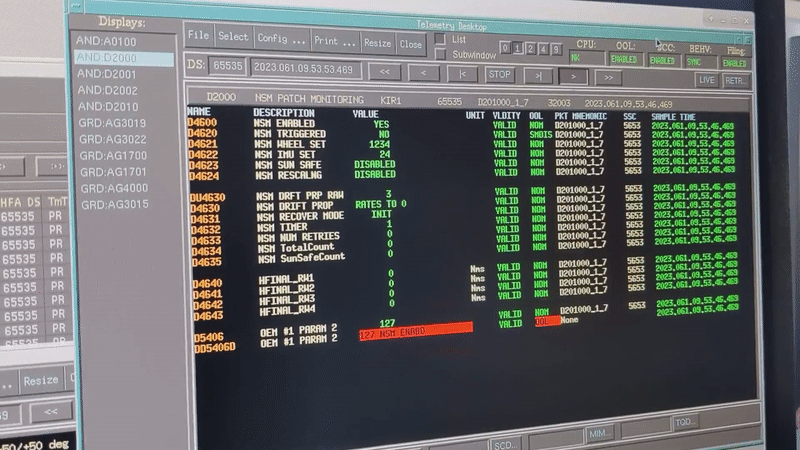This clip captures the exact moment that the new safe mode triggered on ESA’s Integral space observatory for the first time.
In 2020, the thrusters on ESA’s Integral spacecraft failed. To keep the scientific mission alive, the Integral team at ESA’s ESOC mission control centre quickly set to work developing a new series of specialised manoeuvres that would enable them to continue flying the spacecraft using only its reaction wheels – the rotating wheels inside a satellite that allow it to store and use angular momentum to change its orientation.
However, the spacecraft’s original ‘safe mode’ – the system that kicks in to switch off scientific instruments and rotate it to face the Sun to ensure its solar arrays are generating full power – relied on these thrusters to spin the spacecraft to safety in the event of an emergency.
Following the success of their daring rescue attempt, the Integral team decided it was safer to disable the old safe mode entirely and focus on the development of a new safe mode that uses the reaction wheels rather than the thrusters to regain control and rotate the spacecraft back towards the Sun.
“The safe mode is a crucial part of any spacecraft mission,” says Integral Operations Manager, Richard Southworth. “This is likely the first time that an ESA mission has had to have its safe mode redesigned entirely while in orbit.”
But developing new systems for a 20-year-old spacecraft can be a challenge. The old safe mode was almost entirely based on hardware – which can’t be tinkered with after launch. Instead, the team had to develop an entirely new, software-based safe mode.
This system was tested in flight for the first time on the real satellite on 3 March 2023, when Integral’s Flight Control Team deliberately rotated Integral away from the Sun and triggered the new safe mode, which successfully returned the spacecraft to its original safe orientation.



 Image:
Integral's 'new safe mode' activates for the first time
Image:
Integral's 'new safe mode' activates for the first time